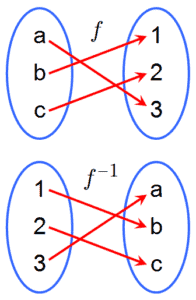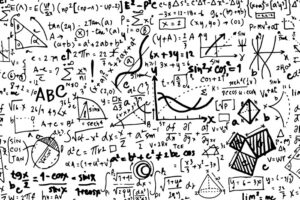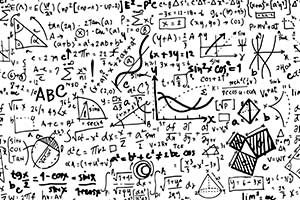Inverse Functions Practice Questions
- Posted by Brian Stocker
- Date March 29, 2019
- Comments 0 comment

An inverse function (or anti-function) is a function that “reverses” another function: if the function f applied to an input x, and gives a result of y, then the inverse function g, applied to y, gives the result x, and vice versa, i.e., f(x) = y if and only if g(y) = x
Inverse Functions Quick Review and Tutorial
Key Concepts
- Definitions
- Function Notation
- Determine the Inverse Function
- Definitions
Function – A set of data such that every input (x) has EXACTLY ONE output (y)
Inverse Function – The result of SWITCHING the input (x) with the output (y)
- Function Notation
A set of data must have exactly one output for each input, though multiple inputs may have the same output.
An equation is written in function notation by replacing “y” with “f(x)” (pronounced “f of x”). Function notation does NOT mean “f times x”! The equation is a function if its graph passes the Vertical Line Test (VLT). The VLT states that if any vertical line can be drawn and touches the graph at more than 1 point, the graph is not a function.
- Determine the Inverse of a Function
To determine the inverse of a function, simply switch the x and y variables. It is commonly accepted to rewrite the inverse equation in slope-intercept form. [Note: Sometimes an original equation is a function, but its inverse is not.] An inverse function is NOT related to the concept of a reciprocal.
Ex. Determine the inverse of the given equation.
y=2x+3
Solution:
Step 1 – Exchange the x and y variables.
(x)=2(y)+3
Step 2 – Solve for y.
2y=x-3
y=(1/2)x-(3/2)
Note: The graphs of a
function and its inverse (if it exists) are reflections across the line y=x.
Practice Questions
1. Find the inverse function of the function f(x) = 3x + 3.
a. (3x – 1) / 3
b. (x + 1) / 3
c. (x – 1) / 3
d. (x – 3) / 3
2. Find the inverse function of the function f(x) = (5x – 2) / 4.
a. (4x – 1) / 5
b. (x + 4) / 5
c. (4x + 2) / 5
d. (4x – 2) / 5
3. Find f -1(1/2) if f(x) = 1 – x.
a. 1
b. 1/2
c. 1/3
d. 1/4
4. If f(x) = 5x and g(x) = 7 – 2x, find (f – g)-1 (0).
a. 1
b. 2
c. 3
d. 4
5. If f -1 (x) = 2x, find f(x).
a. x
b. 2x
c. x/2
d. x/3
Try a FREE Algebra Quiz
1. D (x-3)/3
f(x) = 3x + 3
f -1(f(x)) = x
f -1 (3x + 3) = x
3x + 3 = t
3x = t – 3
x = (t – 3) / 3
f -1(t) = (t – 3) / 3
f -1(x) = (x – 3) / 3
2. C. (4x + 2) / 5
f(x) = (5x – 2) / 4
f -1(f(x)) = x
f -1((5x – 2) / 4) = x
(5x – 2) / 4 = t
5x – 2 = 4t
5x = 4t + 2
x = (4t + 2) / 5
f -1(t) = (4t + 2) / 5
f -1(x) = (4x + 2) / 5
3. B. 1/2
f(x) = 1 – x
f -1(1-x) = x
1 – x = t
x = 1 – t
f -1(t) = 1 – t
f -1(x) = 1 – x
f -1(1/2) = 1 – 1/2 = 1/2
4. A. 1
f(x) = 5x
g(x) = 7 – 2x
f(x) – g(x) = 5x – (7 – 2x) = 5x – 7 + 2x = 7x – 7
(f(x) – g(x))-1(f(x) – g(x)) = x
(f(x) – g(x))-1(7x – 7) = x
7x – 7 = t
7x = t + 7
x = (t + 7) / 7
(f(t) – g(t))-1(t) = (t + 7) / 7
(f(x) – g(x))-1(x) = (x + 7) / 7
(f(x) – g(x))-1(0) = (0 + 7)/7 = 1
5. C. x/2
f -1(f(x))=x We treat f(x) as a variable, so instead of 2x we have 2f(x).
2f(x) = x
f(x) = x/2
Try a FREE Algebra Quiz
Date Published: Friday, March 29th, 2019
Date Modified: Friday, November 14th, 2025
Got a Question? Email me anytime - Brian@test-preparation.ca
You may also like

How to Solve Linear Equations with 2 Variables – Tutorial and Practice

Number Sequence Review Tutorial and Practice Questions




